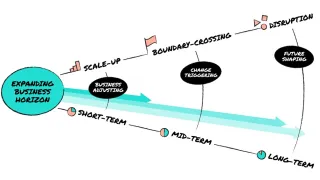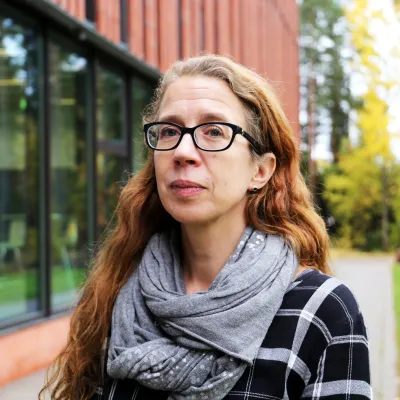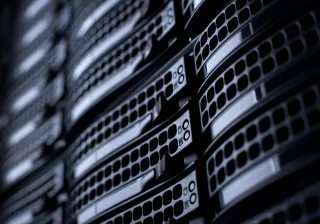Collaborative foresight in ecosystems is a powerful tool that enhances innovation, reduces uncertainty, and supports strategic decision-making through effective knowledge sharing and interorganisational collaboration. Today, ecosystems are using collaborative foresight mostly to create technology roadmaps to support planning within the ecosystem. Foresight in ecosystems, however, could go beyond that. In this blog, we are envisaging more strategic use of foresight in ecosystems.
Adjusting business, triggering change and shaping the future - the three horizons
In general, there are three time horizons (short, mid and long term) which have various impacts on business (Figure 1).
Fig. 1

In the short-term, foresight in ecosystems can support adjusting business in future opportunities. In this, mapping the current actors as well as their interests and the pieces that are missing, is the starting point for adjusting. This enables bridging the gaps in the current business system and obliges us to explore how existing network systems are constrained. The outcome can be a joint offering or improved understanding of various opportunities (what-if scenarios), as foresight tools support participants in making actionable business plans. As a result, the business horizon can be broadened through the scale-up of business within the current business environment.
In the mid-term, the ecosystem can act as a change trigger in markets. In this respect, foresight can support in figuring out varying pathways to design, test, and develop the next-time horizon for the future business landscape. Making the potential of radical new technology real and entering new markets may require a systemic change in the network structures, whereas an ecosystem approach is beneficial. In the mid-term, boundary crossing would enable a broader view of the business horizon as novel relationships are built across the boundaries of industrial sectors, geographical areas, or knowledge clusters.
In the long term, (re)shaping the underlying conditions for system innovation and transformation can enhance us in shaping futures. This is not a fast process, as we seek to join, build upon, and accelerate the change process through blended (both independent and dependent) perspectives on the part of several actors. And typically, we don’t know all these actors yet. Finally, in the long term, the business horizon is opened through emerging disruption in the current business environment, relationships and technologies.
We need to break away from existing networks and path dependencies
There are fundamental differences in the ways of working together, whether the aim is to explore different futures or prepare joint strategic actions. Therefore, we are not saying that expanding the business horizon through foresight in the ecosystem would be an easy task. Otherwise, it would already be a well-established practice in strategic foresight. Based on our discussions with several ecosystems, however, the need to identify new business opportunities and knowledge required to innovate solutions for the identified opportunities is real in many established ecosystems. Thus, there is a call for foresight in ecosystems.
Collaborative analysis of foresight data to make strategic decisions together requires open discussion on actors’ strategic intentions and business choices. This requires fostering out-of-the-box thinking and breaking away from existing path dependencies. When successful, such ecosystem level strategic foresight enhances shaping together a favourable future over what is a ’probable’ or ’projected’ future.
Expanding the business horizon through foresight in the ecosystem is not a ‘mission impossible’. It is doable and worth practising. It requires going beyond current business relationships and coping with dynamic ecosystems in a variety of time horizons.
Read more:
- VTT's white paper: Guidebook for organising corporate foresight






